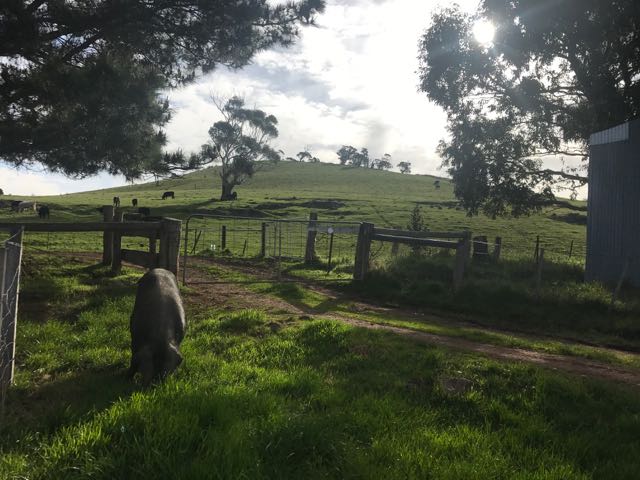
We ran our first Salami Days – teaching people the age-old art of meat, salt, & time. We butchered, seasoned, minced, and stuffed many kilos of salami and hung them in the shed to be enjoyed in a few months’ time. And then PrimeSafe came and destroyed them all. Another hard lesson was learned about the state of food safety regulations in this country, galvanizing me to start garnering stories and evidence for a campaign to change things… by this time I was President of the Australian Food Sovereignty Alliance (AFSA), so I not only had the collective to work with, I had a framework to understand clearly what’s at stake, what we’re fighting for, and who we’re up against.
A year on we rounded up another successful crowdfunding campaign and by 2015 I had a commercial kitchen and curing room to play in, thanks to Stuart’s mad skills in converting containers to incredibly useful workspaces. The new space took us from paddock to plate to paddock to paddock, as we utilize every part of the carcasses – heads are paté de tête or guanciale, pork cheeks, and ears are dehydrated for pet treats, as are trotters; and a quarter of the bones become bone broth and three quarters go to the members. After making paté or bone broth, the spent bones go out to Stuart’s retort to be pyrolised into bonechar – a mineral-rich form of activated carbon that does wonders for our tiny commercial garlic crop and the home garden.
As we increased production of more value-added products on the farm, I also stepped up the advocacy with AFSA as we worked towards establishing a Legal Defence Fund to support farmers against the tyranny of rogue regulators, and scale-inappropriate regulation and land use legislation. Speaking truth to power, demanding the same accountability from government that they demand from food producers, AFSA started gaining real ground as representatives of key stakeholders in the food system – small-scale regenerative farmers.
But all this advocacy meant I took my eye off the ball and the farm suffered for it. Stuart was carrying too much of the load on his strapping shoulders, and we sailed into a fertility crisis that would see us lose nearly 40% of our pork production due to small or non-existent litters as our herd aged, the weather heated unseasonably early, and many of the sows simply got a bit too fat. 2016 was a really tough year.
With the generous support of our beautiful CSA members, we scraped through that year. Great disruptions are known to cause innovation, and after careful planning, we renounced all purpose-grown commercial grain from the pigs’ diet by December, cutting nearly $20,000 out of our annual costs. Contrary to industrial ag wisdom, an ecologically-sound improvement to our model was also an excellent financial decision for the farm. Giving up grain grown in monocrops reliant on petrochemical inputs to instead divert hundreds of tonnes of food waste from landfill was a deeply satisfying shift that furthered our efforts to be a truly agroecological farm.